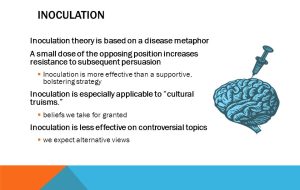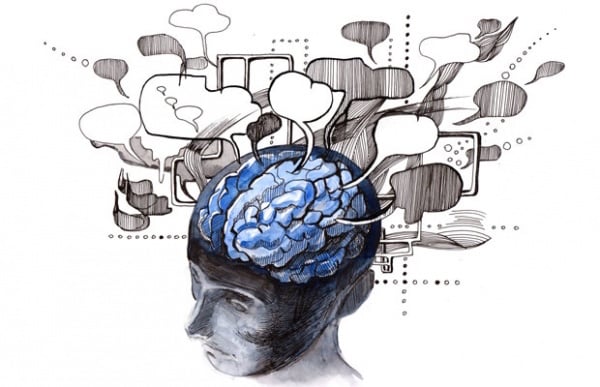Introduction: In a world inundated with misinformation, the ability to discern truth from falsehood has never been more crucial. Deceptive narratives spread rapidly through various channels, shaping public opinion and influencing decision-making. However, amidst the chaos of misinformation, there exists a potent defense mechanism: inoculation theory. Comparable to the concept of immunization in biology, inoculation
Introduction:
In a world inundated with misinformation, the ability to discern truth from falsehood has never been more crucial. Deceptive narratives spread rapidly through various channels, shaping public opinion and influencing decision-making. However, amidst the chaos of misinformation, there exists a potent defense mechanism: inoculation theory.
Comparable to the concept of immunization in biology, inoculation theory offers a proactive approach to building resilience against deception. In this comprehensive exploration, we delve into the intricacies of inoculation theory, uncovering its potential to strengthen cognitive immunity and empower individuals to navigate the information landscape with clarity and confidence.
Understanding Inoculation Theory:

Image by: slideplayer.com
At its core, inoculation theory operates on the principle of preemptive exposure to weakened forms of misinformation. By providing individuals with a “vaccine” against deception, inoculation theory equips them with the cognitive tools necessary to recognize and resist manipulation.
This proactive approach involves warning individuals of the tactics used by purveyors of misinformation and providing them with refutations to debunk false claims. Through this process, individuals develop a cognitive immunity that enables them to discern truth from falsehood, fostering a culture of critical thinking and skepticism.
Types of Inoculation Theory:
In our exploration of inoculation theory, we encounter three primary types of inoculation: fact-based, technique-based, and source-based. Fact-based inoculation involves debunking specific examples of misinformation with factual explanations, equipping individuals with the knowledge to counter false claims effectively.
Technique-based inoculation focuses on exposing the tactics used to mislead, empowering individuals to recognize and resist deceptive strategies. Source-based inoculation reveals the lack of credibility of misleading sources, enabling individuals to discern reliable sources of information from unreliable ones. By understanding these different types of inoculation, individuals can develop a comprehensive defense against deception.
Implementing Inoculation Theory in Education:
Education emerges as a critical arena for the application of inoculation theory, where it serves as a powerful tool for cultivating critical thinking skills and media literacy. By integrating inoculation techniques into educational curricula, educators can empower students to navigate the complexities of the information landscape effectively.
Passive inoculation activities expose students to misinformation and pseudoscience, prompting critical evaluation and analysis of deceptive claims. Active inoculation exercises engage students in creating and identifying misleading content, thereby honing their analytical skills and enhancing their media literacy. Experiential inoculation immerses students in simulated scenarios of misinformation, providing them with firsthand experience of deception and fostering resilience against manipulation.
Case Studies :
Real-world examples illustrate the practical application of CDI theory in educational settings. Through meticulously designed exercises, students are exposed to various forms of misinformation and equipped with the cognitive tools necessary to combat deception effectively.
Passive inoculation activities challenge students to critically evaluate misleading claims, while active inoculation exercises empower them to create and identify deceptive content. Experiential inoculation immerses students in simulated scenarios of misinformation, enabling them to develop a heightened awareness of deceptive tactics and cultivate resilience against manipulation.
Based on the information provided, here’s a table summarizing the types of inoculation:
| Method of Inoculation | Fact-based | Technique-based | Source-based |
|---|---|---|---|
| Delivery Mechanism | Passive | Active | Experiential |
| Order | Prebunking (prophylactic) | Debunking (therapeutic) | |
| Style | Non-humorous | Humorous |
In the next three sections, real-world examples of three inoculation methods implemented in a general-education science course taught by Melanie at Massasoit Community College in Brockton, Massachusetts are outlined. The course, Science for Life, focuses on teaching students critical thinking, information literacy, and science literacy skills (Trecek-King, 2022).
Conclusion:
Inoculation theory emerges as a potent defense against deception, offering a proactive strategy for building cognitive immunity and fostering critical thinking skills. By harnessing the strength of inoculation theory, individuals can fortify their minds against misinformation and navigate the information landscape with confidence and clarity.
As we confront the challenges of an increasingly complex media environment, the principles of inoculation theory serve as a beacon of hope, empowering individuals to discern truth from falsehood and uphold the principles of informed citizenship.
















